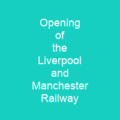High Speed 2 is a planned high speed railway in the United Kingdom. Upon completion, the railway will link London, Birmingham, Manchester and Leeds. HS2 will be the second major high-speed rail line in Britain; the first is High Speed 1 which connects London to the Channel Tunnel and was opened in the mid-2000s. Once completed, sixteen trains per hour are planned to use the line either wholly or in part.
About High Speed 2 in brief

The report concluded that the original rationale for HS2 was still valid, and no valid interventions existed that could be deployed within the timeframe of the HS2 project. It is envisaged that the introduction ofHS2 will free up space on existing railway lines by removing a large number of express services, allowing additional local train services to run and enabling the network to handle increasing passenger numbers, and that favourable journey times and ample capacity will generate modal shift from air and road to rail. The High Speed Rail Act 2017 authorising the construction of Phase 1 passed both Houses of Parliament and received Royal Assent in February 2017. A bill, seeking the power to construct Phase 2 as far as Crewe and make decisions on the remainder of the Phase 2b route, was introduced in July 2017. Phase 1 will create a new high speed line between London and Birmingham, and Phase 2 will create two branch lines from Birmingham north either side of the Pennines. After a judicial review on environmental grounds initiated by television presenter Chris Packham failed, construction on the line began in September 2020. It will provide upgrades to the terminal stations of London Euston, Manchester Piccadilly and Leeds, whereas Birmingham will be served by a new terminus known as Birmingham Curzon Street. In January 2012 the Secretary of State for Transport announced that HS1 would be built in two phases and the legislative process would be achieved through two hybrid bills.
You want to know more about High Speed 2?
This page is based on the article High Speed 2 published in Wikipedia (as of Nov. 29, 2020) and was automatically summarized using artificial intelligence.







